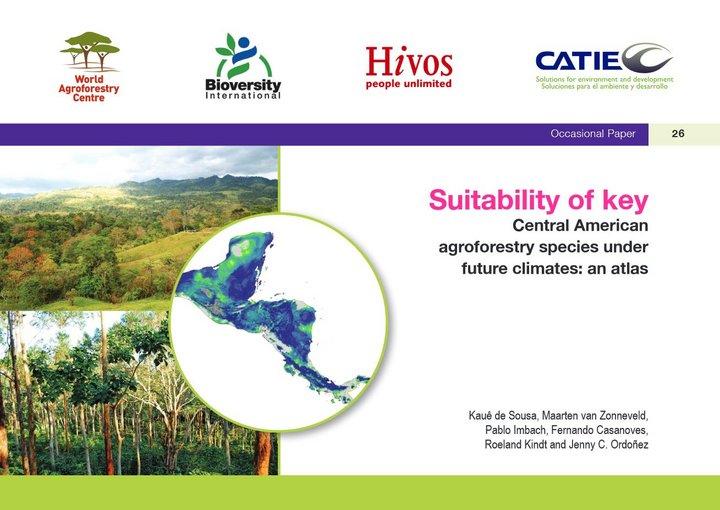A climate change atlas for Central America

Users can now explore the predicted effects of climate change on important agroforestry species.
Lima, Peru – December 20, 2017 – The World Agroforestry Centre (ICRAF) in collaboration with Bioversity International and The Tropical Agricultural Research and Higher Education Center (CATIE) today published an Atlas titled ‘Suitability of key Central American agroforestry species under future climates’. The Atlas presents current and future suitability maps for 54 species that are commonly used as shade in agroforestry systems in Central America. The 54 species that were selected include 24 species of fruit trees, 24 timber trees and six species used to improve soil conditions.
“The main objective of the Atlas is to address a current knowledge gap in detailed information about suitable areas for key agroforestry species in Central America,” said Kauê de Sousa of Bioversity International who is the main author of the study. “The agroforestry practice of integrating trees within cocoa or coffee, silvopastoral or smallholder timber systems is key to the development of strategies for climate-smart agriculture in the region. It is important to know where a species remains suitable under future climatic conditions to be able to give practical advice to farmers and tree growers.”
The Atlas addresses this knowledge gap by providing detailed suitability maps for each species. Detailed mapping was possible by substantially expanding previously available data sets of known presence locations (locations where a species was documented to be suitable in Latin America and the Caribbean) and by applying powerful species distribution modelling methods.
Read the full press release on World Agroforestry Centre's website
Photo: Cover of the 'Suitability of key Central American agroforestry species under future climates' atlas. Credit: ICRAF
